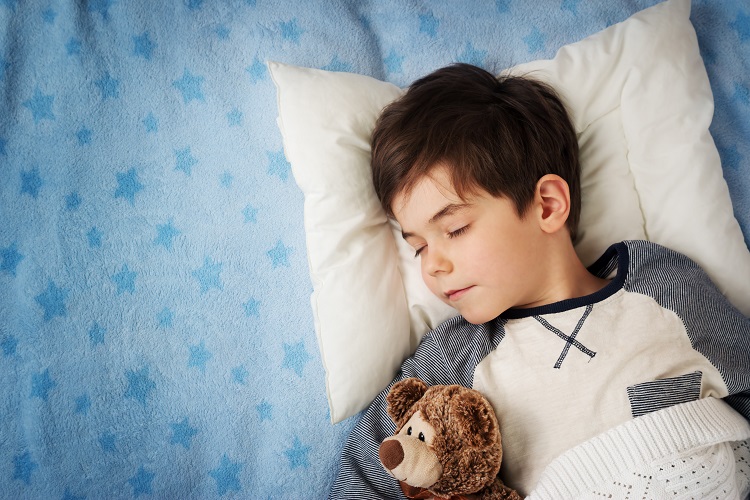Getting enough sleep is essential for children to be healthy. Children who get enough sleep have improved attention, behavior, learning, memory, emotional regulation, quality of life, and mental and physical health.
Children who get an insufficient amount of sleep can develop attention, behavior, and learning problems. Insufficient sleep can also increase the risk of accidents and injuries and health issues, such as hypertension, obesity, diabetes, and depression. In teenagers who do not get enough sleep, there is an increased risk of self-harm, suicidal thoughts, and suicide attempts. On the other hand, regularly getting too much sleep has been linked to health problems, such as obesity, diabetes, hypertension, and mental health problems.
As children grow, they need less sleep, but how much is appropriate? In 2016, the American Academy of Sleep Medicine released new sleep guidelines for children. These guidelines are endorsed by the American Academy of Pediatrics (AAP). The recommendations for the number of hours of sleep children should get on a regular basis in a 24-hour period are as follows:
- Infants* 4 months to 12 months: 12 to 16 hours
- Children 1 to 2 years of age: 11 to 14 hours
- Children 3 to 5 years of age: 10 to 13 hours
- Children 6 to 12 years of age: 9 to 12 hours
- Teenagers 13 to 18 years of age: 8 to 10 hours
*Recommendations for infants younger than 4 months are not included due to the wide range of normal variation in duration and patterns of sleep and insufficient evidence for associations with health outcomes.
You can improve your child’s sleep and ensure he or she gets the recommended number of hours by establishing and maintaining a consistent sleep routine. Children should go to sleep and wake up at approximately the same times every day, even on weekends. Creating an environment conducive to good sleep, such as putting away electronics at least 30 minutes before bedtime; removing all electronics from the bedroom; and making sure your child has a cool, quiet, dark, and comfortable sleep environment can help ensure your child gets enough sleep.
Additional Resources:
5210 and Healthy Sleep
https://5210.psu.edu/wp-content/uploads/2017/08/5210andhealthysleepimprove7-11-17.pdf
References:
Paruthi, S., Brooks, L. J., D’Ambrosio, C., Hall, W. A., Kotagal, S., Lloyd, R. M., … Wise, M. S.. (2016). Recommended amount of sleep for pediatric populations: a consensus statement of the American Academy of Sleep Medicine. Journal of Clinical Sleep Medicine, 12(6), 785–786.
American Academy of Pediatrics. (2016). Statement of Endorsement: Recommended Amount of Sleep for Pediatric Populations. Pediatrics, 138(2), e20161601




